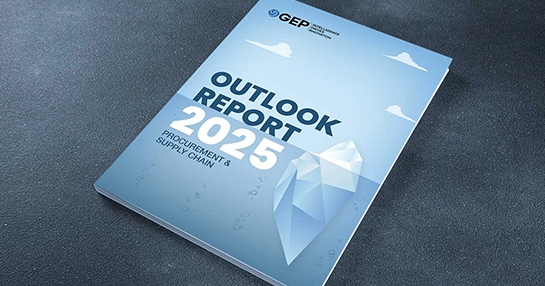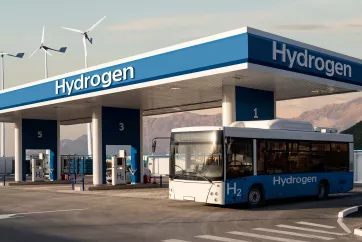
Beyond Compliance: 6 Ways to Drive Value from Scope 3 Emission Reporting
- Focus on high-emission, high-control categories for meaningful reductions.
- Leverage AI-powered technology to improve data quality and accuracy and identify emission hotspots.
- Integrate Scope 3 initiatives with cost-saving measures, supply chain risk management and revenue opportunities to future-proof operations.
April 21, 2025 | Sustainability
Are you just reporting Scope 3 emissions to stay compliant—or are you turning them into a competitive advantage?
For businesses already familiar with Scope 3, the next step is to go beyond regulatory checkboxes and use emissions data to optimize supply chains, cut costs, and enhance brand reputation. Instead of seeing Scope 3 as a burden, the smartest organizations are using it to strengthen partnerships, unlock efficiencies, and future-proof their operations.
Here’s how to make Scope 3 reporting work for you:
1. Prioritize High-Impact Categories
Not all Scope 3 categories are created equal. To maximize impact, businesses should focus on emission sources that are both significant and controllable. Key areas include:
Supplier Engagement: Work closely with suppliers in high-emission categories to implement low-carbon processes, energy efficiency measures, and alternative materials.
Product Lifecycle Optimization: Assess emissions from product use and identify opportunities for energy-efficient design, longer product lifespans, or circular economy initiatives.
Logistics and Transportation: Optimize freight and distribution networks to reduce fuel consumption and emissions from upstream and downstream transport.
By prioritizing these high-impact areas, businesses can ensure resources are directed where they yield the greatest return.
2. Use Reporting as a Competitive Advantage
Investors, customers, and regulators increasingly expect transparency in Scope 3 reporting. Companies that lead in this area can:
Differentiate Themselves in ESG Rankings: Enhanced reporting can improve sustainability scores, attracting ESG-focused investors.
Build Trust with Stakeholders: Demonstrating accountability through clear, verifiable emissions data fosters credibility with partners, customers, and regulatory bodies.
Strengthen Brand Reputation: Companies that proactively disclose and address Scope 3 emissions are better positioned to meet evolving consumer preferences for sustainable products and services.
Rather than viewing Scope 3 reporting as a compliance task, forward-thinking organizations can use it to gain strategic visibility and unlock new business opportunities.
3. Embrace Technology for Data Quality
One of the biggest challenges in Scope 3 reporting is data collection and accuracy. Companies should move beyond spreadsheets and manual tracking, adopting advanced data platforms that offer:
Automated Emission Calculations: AI-driven tools can model emissions more accurately by integrating real-time supplier and logistics data.
Improved Granularity: Detailed tracking allows businesses to pinpoint emission hotspots and measure the impact of reduction initiatives.
Enhanced Traceability: Digital platforms provide clear audit trails, ensuring compliance with evolving regulatory standards.
By leveraging digital solutions, businesses can streamline data collection, improve decision-making, and enhance overall reporting quality.
4. Innovate Through Collaboration
Scope 3 reductions often require a collective approach, involving stakeholders across the supply chain. Companies can drive impact by:
Partnering with Suppliers: Co-developing low-carbon materials and processes to reduce upstream emissions.
Engaging Customers: Encouraging responsible product use, recycling, and end-of-life disposal strategies.
Collaborating with Industry Peers: Aligning on shared sustainability goals, standardizing methodologies and advocating for policy changes.
A collaborative mindset accelerates progress, making it easier for businesses to implement changes at scale.
5. Align Scope 3 Strategies with Business Goals
To move from compliance to value creation, organizations should integrate Scope 3 strategies into broader business objectives. Key benefits include:
Cost Savings: Improved energy efficiency, optimized logistics, and supplier collaboration can drive long-term cost reductions.
Resilience: A low-carbon supply chain mitigates risks related to climate regulations, resource shortages, and market shifts.
Growth Opportunities: Companies that invest in green products and circular economy initiatives can access new customer segments and revenue streams.
A proactive approach ensures that sustainability initiatives are not just an obligation but a driver of financial and operational performance.
6. Monitor Progress and Adapt
Scope 3 reporting is an ongoing process, requiring continuous refinement. Companies should:
Regularly Assess Emission Trends: Track performance against reduction targets and identify gaps.
Refine Methodologies: As data accuracy improves, businesses should update models to reflect real-world conditions.
Adapt Strategies: Evolving regulations, technological advancements, and market shifts require companies to remain flexible in their sustainability approach.
By treating Scope 3 as a dynamic, strategic function, businesses can stay ahead of regulatory requirements as well as industry expectations.
Also Read: How Ready Are Companies for Mandatory Scope 3 Reporting?
Use Scope 3 Reporting to Drive More Value
Moving beyond basic compliance, organizations can transform Scope 3 reporting into a strategic lever for innovation, resilience, and growth. By prioritizing high-impact categories, embracing technology, fostering collaboration, and integrating sustainability with business objectives, companies can future-proof their operations while making meaningful contributions to global climate goals.



